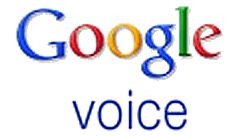Google Expands Voice Search To Desktop Machines

PC users can now speak their search inquiries after Google expanded its Voice Search to desktop platforms
Google has expanded its Voice Search capability to desktop PCs, so that people can now speak their search requests, while sitting in front of their home computers.
This was one of the announcements made at Google’s Inside Search event 14 June, which mostly focused around improving search speeds and efficiency.
Google Voice Search for the desktop and Google Search by Image on the desktop are certainly intended to provide the latter, both borrowing from innovation the search engine cultivated first on mobile phones.
Voice Commands
Taking a page out of Google’s Voice Search for mobile phones, the Voice Search feature adds an icon to the desktop version of Google.com. When users click it, they can speak into their computer microphone to conduct searches.
Google officials demonstrated how Voice Search is particularly useful for long queries that typically require enough typing to be a nuisance, such as “a recipe for spaghetti with bolognese sauce.” Google was able to track down a recipe quickly and reliably.
 What’s more, users may also make their query in English and get it translated to Spanish and other languages. Voice Search on desktop utilises the Speech API in Google’s Chrome web browser and will be available to everyone using Chrome 11 and later versions in English after it has rolled out over the next week.
What’s more, users may also make their query in English and get it translated to Spanish and other languages. Voice Search on desktop utilises the Speech API in Google’s Chrome web browser and will be available to everyone using Chrome 11 and later versions in English after it has rolled out over the next week.
Google Speech Technology Manager Mike Cohen noted that this capability is possible from the 230 billion words Google has recorded for its English speech recognition system, making the search engine the possessor of an astounding vocabulary. Voice Search traffic has grown sixfold in the past year alone.
Mobile Crossover
Google Search by Image joined Voice Search as another technology the company has borrowed from its mobile phone inventions. Users of the Google Goggles visual search application have been able to take pictures of landmarks, locations and some two-dimensional products for the last two years.
However, Google thought it would be useful to apply this technology to the desktop for times when users can’t find words to bring important context to the picture they are seeing.
This can be especially useful for pictures users have taken and stored online, such as holiday pictures, but forgot to add captions to them.
Google Images
As with Google Goggles, this feature will work better with landmarks, locations or paintings than with more personal photos. Johanna Wright, director of search product management, noted in a blog post:
“The technology behind Search by Image analyses your image to find its most distinctive points, lines and textures and creates a mathematical model. We match that model against billions of images in our index, and page analysis helps us derive a best guess text description of your image. Search by Image technology also includes the ability to match against images on the Web so that we can show you similar images and webpages that contain your image.”
Users must place images in the search box on Google’s images.google.com website. To do this, users may click the camera icon in the search box and upload a photo from their computer, paste the URL of an image from the Web, or drag and drop pictures from Web pages or their computer into the search box.
Finally, Google has created Chrome and Firefox extensions to let users search images from their computer with a single click. The Chrome and Firefox extensions are available for download now, but won’t work until Search by Image is rolled out in most countries over the next couple of days.
These innovations might not be earth shattering, but they could certainly help Google maintain its massive search share versus Yahoo and innovative smaller rivals such as Bing.